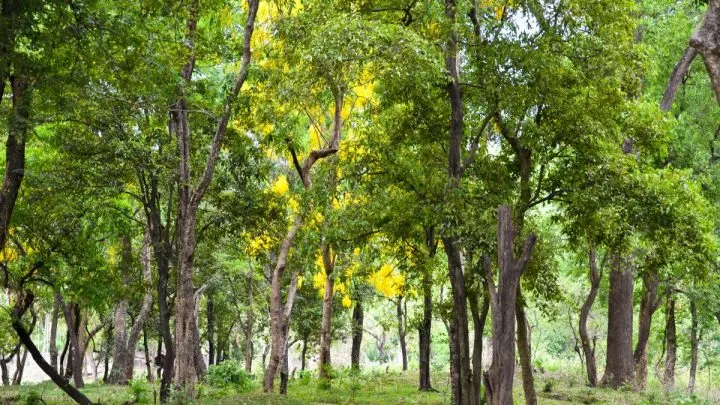What would be the most expensive tree in the world? I don’t know about you, but it certainly got me thinking a couple of times at least.
You see all these things, and items and you can just wonder, why is their price that high? What is the thing behind their price? What is so special about these trees and their wood material?
In this article, we’re going to answer all of these questions and you’ll get to know better the most famous expensive trees in the world.
These tropical forest woods from Central America will perfectly suit your home and any home style due to their simplicity and elegance at the same time.
Along with that, we’ll discuss their use, their history, and interesting facts about them. Search no more for these answers because we got it all here.
Let’s do some reading darlings.
What Is The Most Expensive Tree In The World?
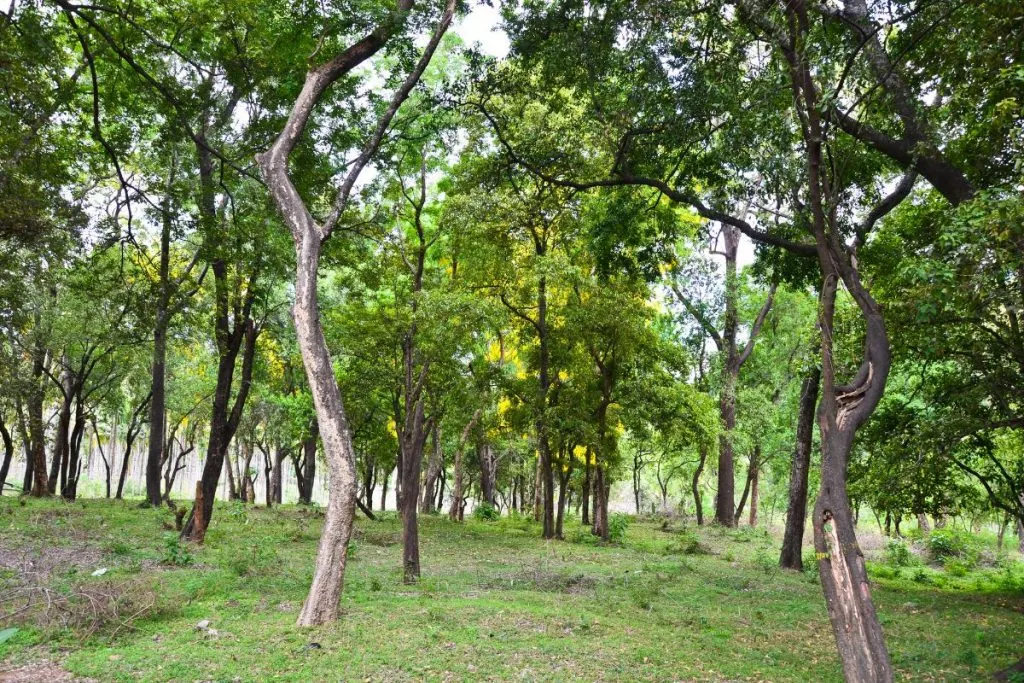
In the world rated as the most expensive tree is Sandalwood. Its price is 20.000$ per tree. That does sound expensive, isn’t it?
Those who have been on a trip to India will never forget the characteristic smell of this plant. The scent of sandalwood permeates the rooms, lingers in clothes, and envelops the body.
The plant that produces this fragrance is a tree that can grow up to ten meters in height, is green and blooms all year round, and is not overly picky about where it grows. It thrives well both in fertile valleys and on dry mountain slopes.
Moreover, the drier and scarcer its habitat, the more intense the smell of its wood. The large, leathery leaves resemble bay leaves.
On the tops of the branches, there are clusters of flowers that mostly have four petals and are odorless, after flowering they are yellow, and over time they gradually change color to dark red.
We have also other articles on the subject expensive. For example: Do you know how much costs the most expensive Bonsai tree? Or what are the most expensive house plants?
More About Sandalwood Features And Its Habitat

Sandalwood is from the genus Santalum. The tree is large and hard, the flowers are yellow clusters of small flowers, and unlike many other aromatic plants, they retain their fragrance for a very long time.
For the production of quality fragrant essential oils use sandalwood. It is the second most expensive wood in the world, after black wood.
For centuries the distinctive smell of Sandalwood products and oil is highly valued. Because of this, these slow-growing tree species have suffered overexploitation in the last century.
Sandalwoods are medium-sized hemiparasitic trees and are part of the same botanical family as European mistletoe. Significant members of this group are Indian sandalwood and Australian sandalwood.
Most Expensive Tree – Sandalwood Oil
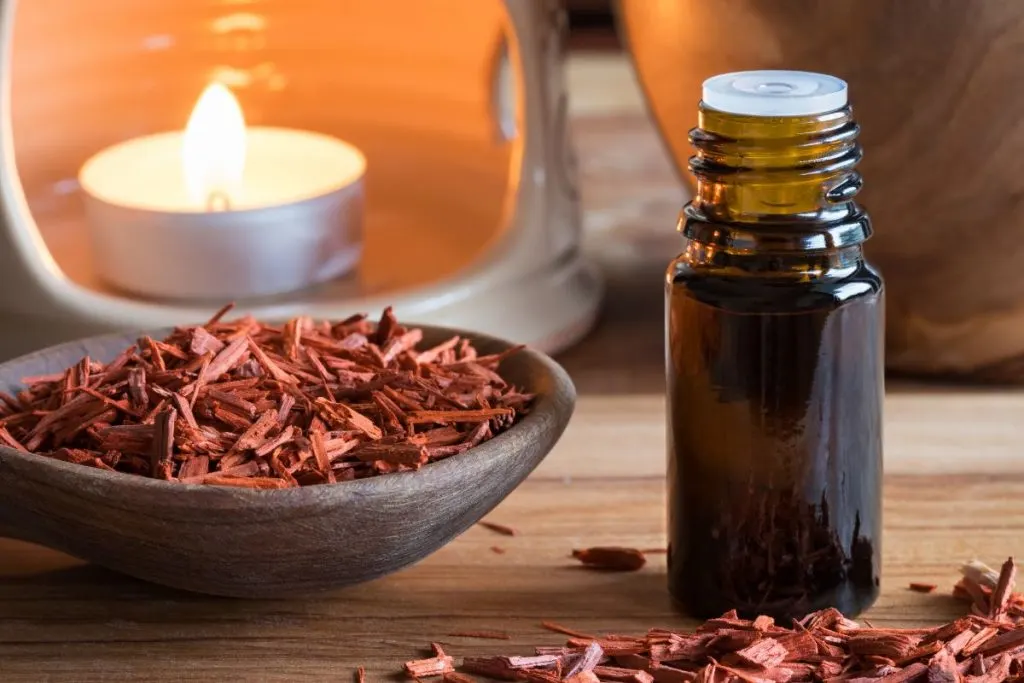
Sandalwood oil has a distinctive, soft, warm, smooth, creamy, and milky scent of noble wood. It provides a long-lasting, woody base to perfumes from the oriental, woody, fougère, and chypre families, as well as a fixative for floral and citrus fragrances.
When used in smaller proportions in a perfume, it acts as a fixative, increasing the longevity of other, more volatile materials in the composite.
Sandalwood is also a key ingredient in the fragrance family. In combination with white flowers such as jasmine, ylang ylang, gardenia, plumeria, orange blossom, tuberose, etc.
Where Does This Expensive Wood Come From?
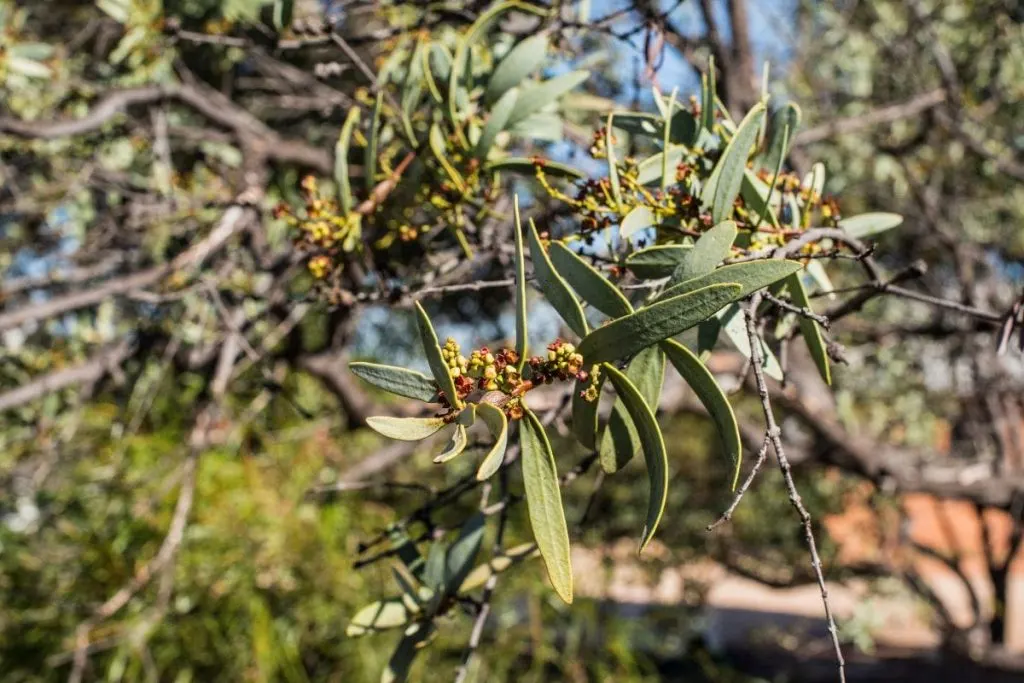
This expensive wood comes from India, Nepal, Bangladesh, Pakistan, Sri Lanka, Australia, Indonesia, Hawaii, and other Pacific islands.
S. album is an endangered indigenous species of South India and grows in the Western Ghats and several other mountain ranges such as Kalrayan and Shevaroy Hills.
Although sandalwood trees in India, Pakistan, and Nepal are in the ownership of the state. Many trees are illegally cut down. Although their harvest is under control.
African Blackwood Features
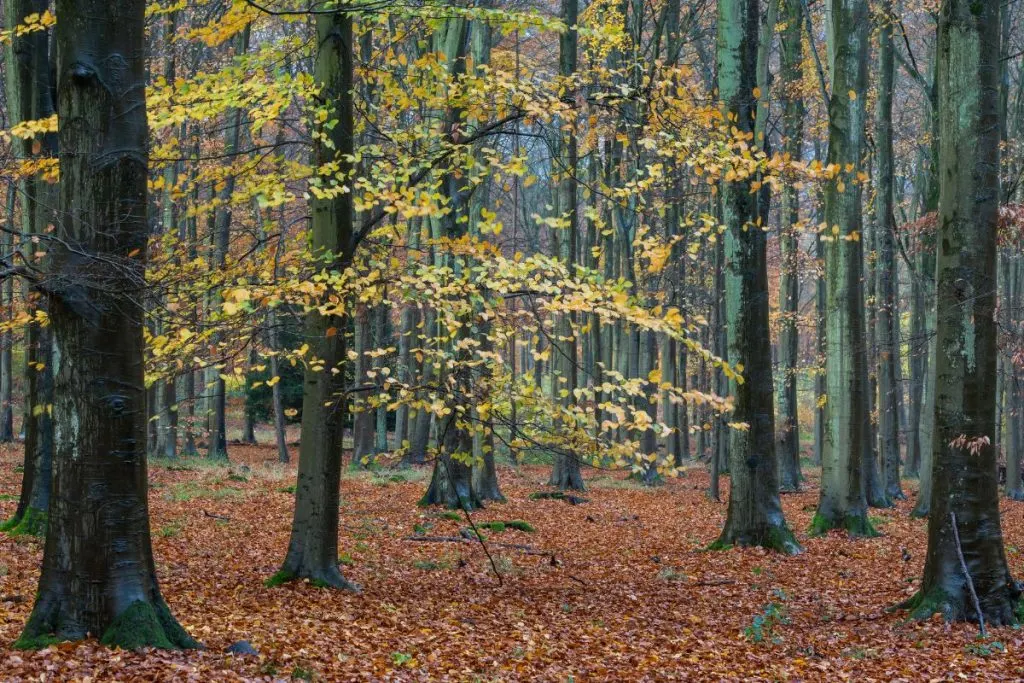
Also called ebony, this tree E belongs to the genus Persimmon. Many people know this genus for its sweet, fleshy, bright orange fruits. But ebony is not always edible. Eastern, white and Virginian persimmons, as well as the Maloba varieties, produce delicious fruit.
Today, they can grow in any country with a warm climate. Chocolate varieties and large black apple-like berries are for sale. Even the Philippines began to grow an edible variety with bright red berries called “Velvet Apple”.
In Israel, they brought the variety “Sharon”, which has no seeds, and the taste has no astringent notes. Supermarkets bring these fruits to many countries. Other varieties are also famous for their valuable wood.
Blackwood History
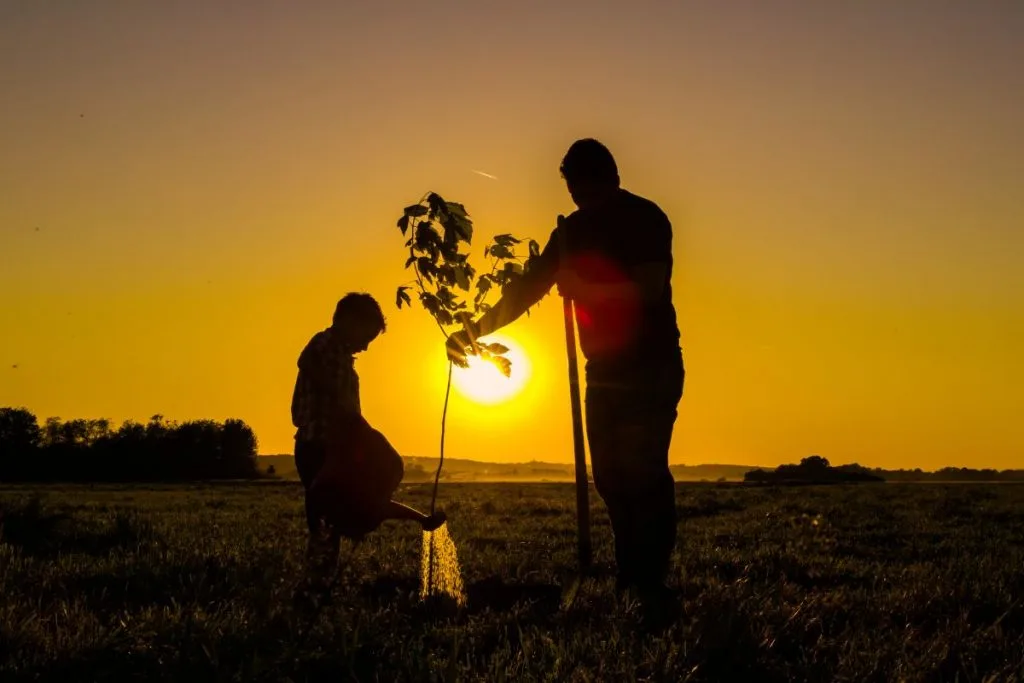
The blackwood tree had many names. Africans called it “mugembe” and “mpingo”. In use are also the names “musical tree” and “zebra”. Ancient tribes used to bark, leaves, and wood in the economy.
They tended to worship nature, and ebony in Africa also had supernatural properties. It was believed that if you fenced the house with an ebony palisade, then evil spirits could not enter it.
To make amulets and ritual weapons they use the valuable wood. Masters made ebony boxes in which they kept ritual objects so that the gods did not turn away from them and preserved their magical properties.
Blackwood Characteristics
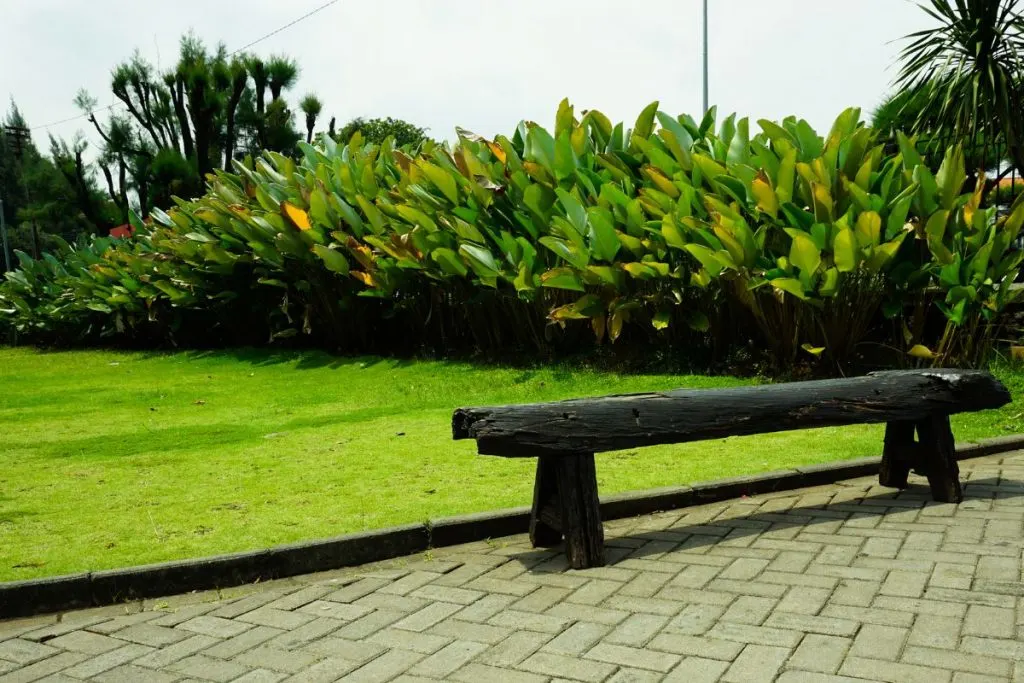
Trees of the Ebony family, which have valuable wood, have powerful trunks. The diameter of many plants exceeds 3 feet, and their height is up to 32 feet.
Ebony grows very slowly, which gives the wood greater density. According to its properties, the density of black wood exceeds the density of oak by more than 2 times.
The bark and sapwood are not valuable. They are only in use by local healers for their potions and household artisans. Unfortunately, the bark and sapwood, which they remove before the sale, can be 60-70% of the whole trunk.
In addition to its high density, the heartwood is oily and can withstand changes in temperature and humidity without losing stability. Ebony can have the sound of wood black, chocolate, and purple-violet.
It can be homogeneous or striped, there are no distinct annual rings in the heart. This type of valuable wood does not rot and is not susceptible to insect damage.
Use Of Blackwood Tree
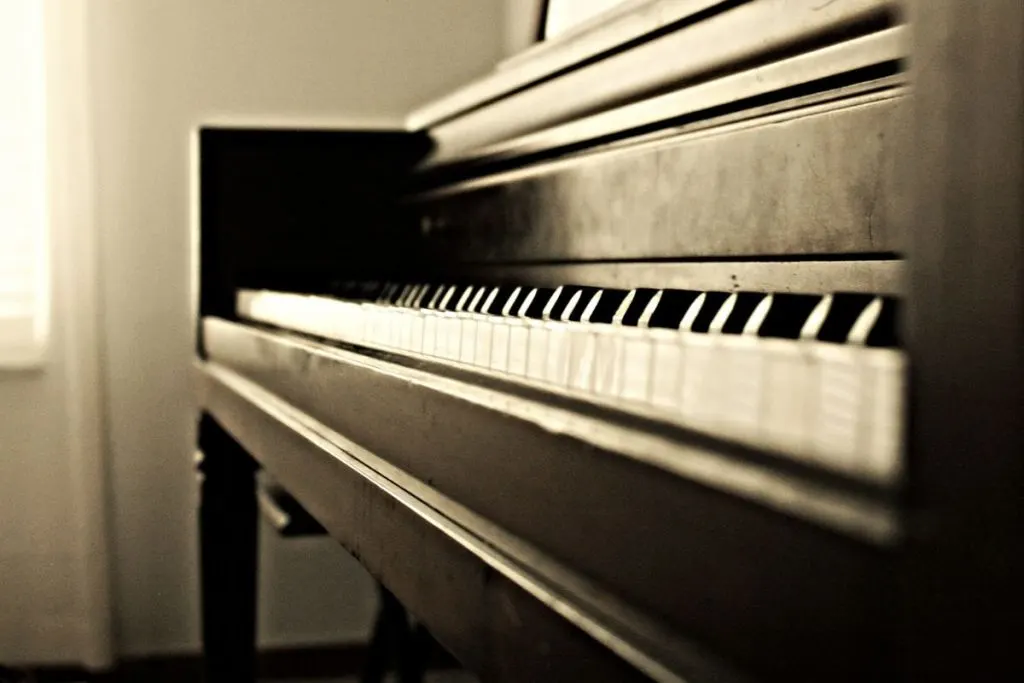
This does not mean that ebony is in widespread consumption. It is an expensive and valuable material that is inaccessible to the average consumer. It makes unique exclusive things.
These can be decorative statues, musical instruments, tables, chairs, cabinets or dressers, parquet, or pool cues. But the list depends on the imagination and qualifications of the master.
This wood is used for fine art pieces as a frame. When you have an expensive piece of art you’re going to frame it in the expensive frame too. Pink ivory price is also suitable as a frame for pricey art. This valuable tree is used as a framed wood in many popular museums all around the world.
Most Expensive Tree Fine Furniture With Sandalwood And African Blackwood
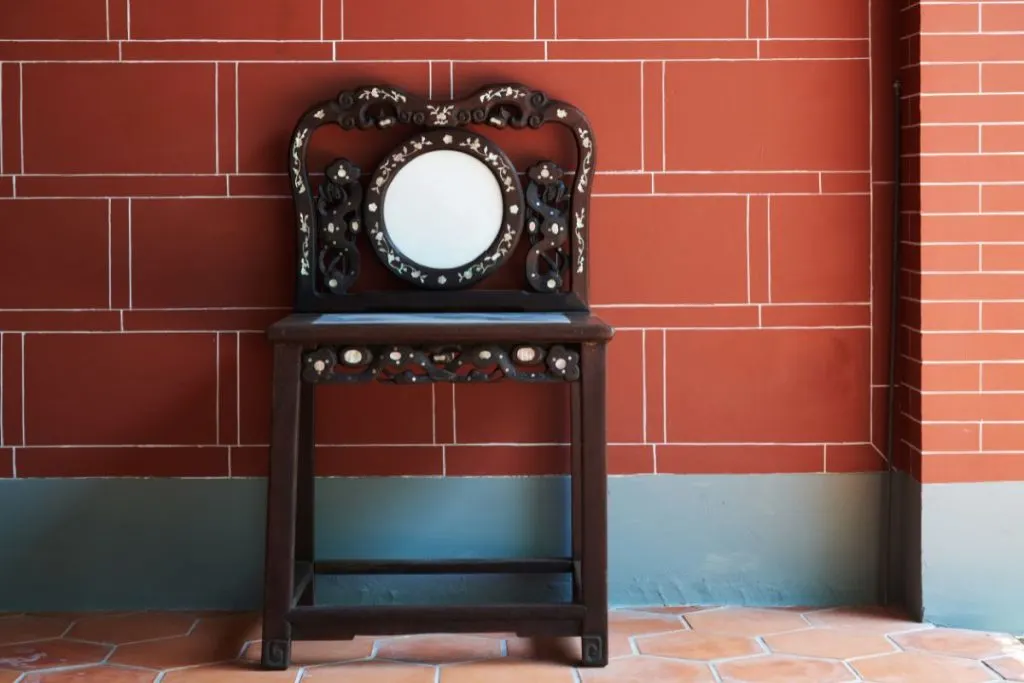
I’m sure you’ve seen a show with expensive penthouses. At least a third of the furniture in such apartments is of blackwood or sandalwood.
Most of them were kitchen tables, kitchen cabinets, floors, or desks. Sometimes even shelves.
This beautiful type of wood smells wonderful, fits with all colors in your apartment, and simply brings that touch of exotic atmosphere to your home.
Italian and French furniture made of ebony or sandalwood costs between $30,000 and $50,000 depending on what you get.
Of course, this price isn’t for everyone’s pocket but those who enjoy art deco things and want only high quality in their home, they’ll get it.
Furniture And Ornamental Boxes Made From Fine Wood
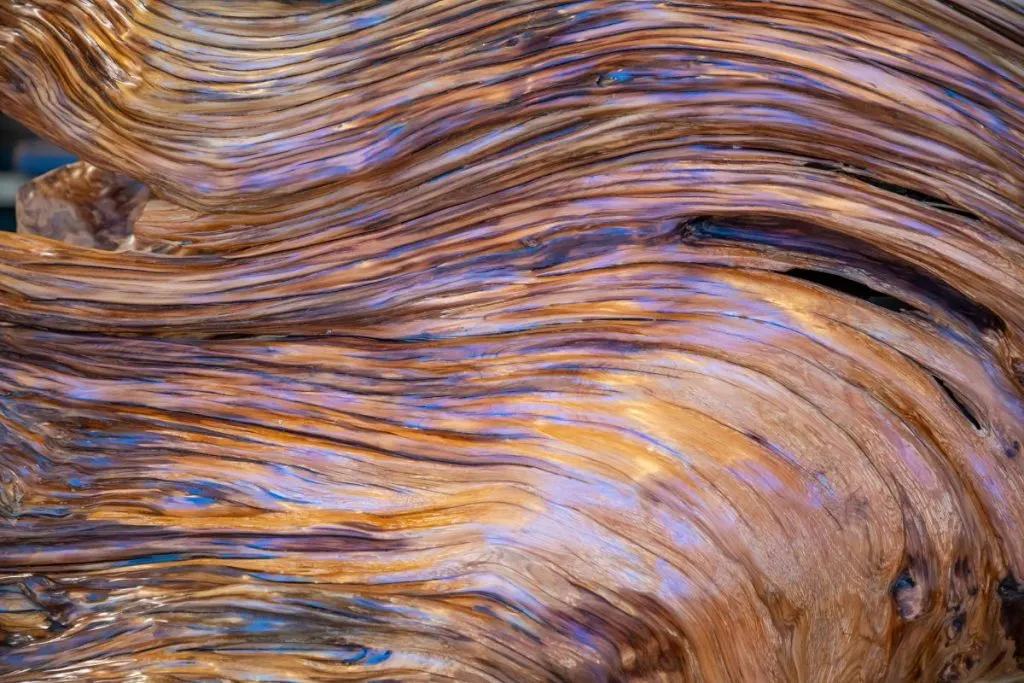
As we said above, furniture is the most popular thing that is made from sandalwood and blackwood. But not only furniture, in some countries, but they also make the most amazing ornamental boxes that are great decor for your home.
The decorative box is a product used mainly in salons, palaces, banquet halls, or conference rooms, and banquet halls are made from rare wood and exotic wood usually.
It is a classic elegant valuable wood product that you can see even in houses and apartments. Most people like this aromatic wood because of its special aroma.
Due to their original appearance, the barn floors often become the main decor of an entire room. The effect they get from the combinations in use is impressive at a glance.
When sitting on such a floor there is freedom in design, wood combinations, and patterns. The only condition is high aesthetics to match the interior.
Thanks to the experience and skill of the carpenter, each plank fits perfectly. The complex floor design can be found in special designs such as suitcases.
About Pink Ivory Tree
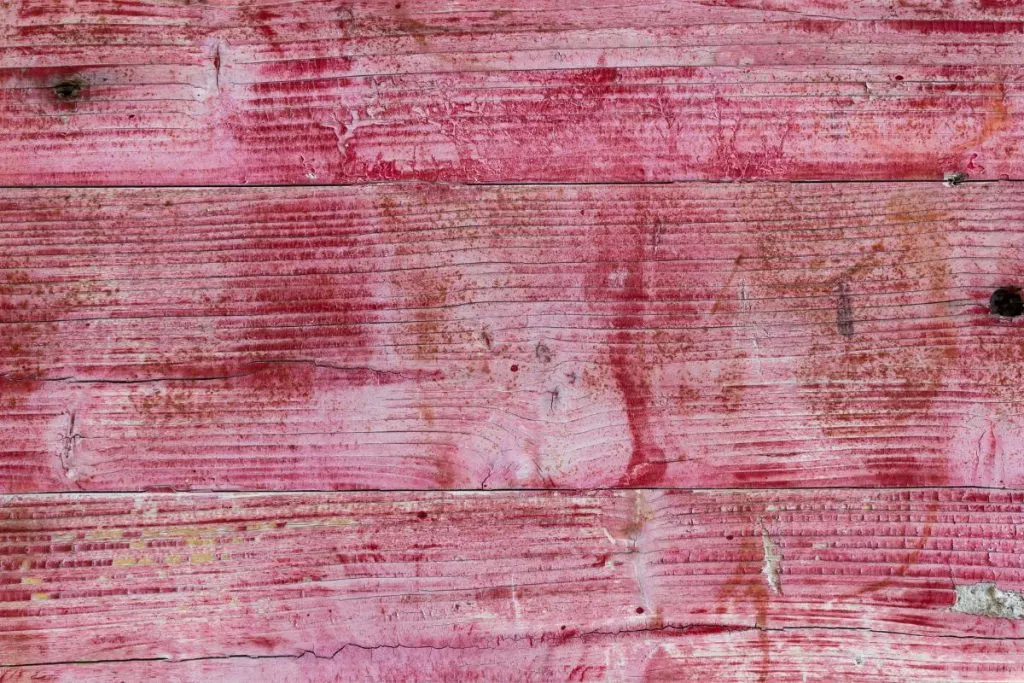
Ivory pink ranges in color from light brown to light pink, from neon pink to deep red. Generally, the most valuable part of pink ivory is the bright pink part. You can see often pink ivory in wavy or violin grain patterns to further enhance the visual effect.
It is usually pale yellow to light brown and the heartwood gradually cracks. Pink ivory discoloration can be problematic sometimes when getting a piece of furniture and is not fully understood.
The grains fall directly into each other. Pleasant, uniform texture, with a beautiful natural shine. Median stomata are not specifically located and growth rings may differ due to the increased frequency of earlywood pores.
Pink ivory has very strong corrosion resistance and excellent weather resistance. However, it is rarely used for applications where this is an issue. Pink ivory has a pronounced dull effect on the cutting edge and is very difficult to work in board form.
You can break it with a shape or quarter. Pink ivory is much more common for engraving or turning operations and turns and finishes well.
Brazilian Rosewood Counts Too As A Most Expensive Tree
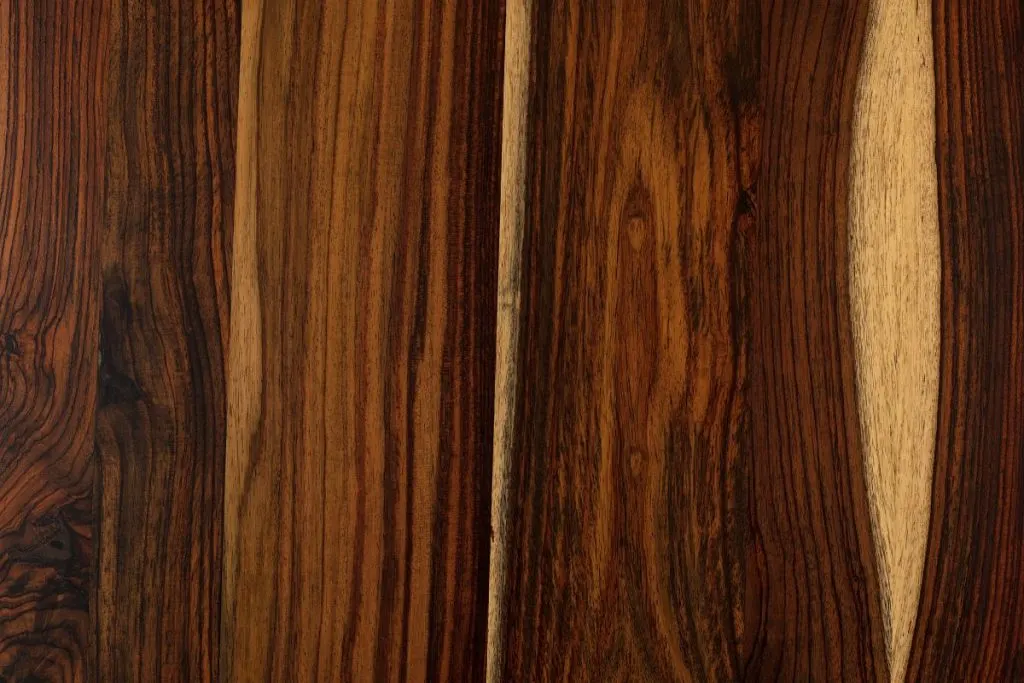
Brazilian rosewoods range in color from dark chocolate brown to light purple or reddish brown with dark contrast stripes. The bright yellowish sapwood is clearly distinguished from the heartwood. Brazilian Rosewood has a consistent medium to coarse texture with medium-sized open pores.
The grain tends to be straight, but sometimes it can engage, spiral, or be wavy. Heartwood is rated to be highly resistant to rot and resistant to insect attacks. Easy to work with hand tools and power tools, but the cutting edge may be slightly dull.
Brazilian rosewood can be difficult to bond due to its high natural oil content, but it bends and gives a better finish. Severe reactions are rare, but Brazilian rosewood has been reported as a sensitizer. Usually, the most common reaction is simply the inflammation of the eyes and skin.
Ziricote Wood Quality
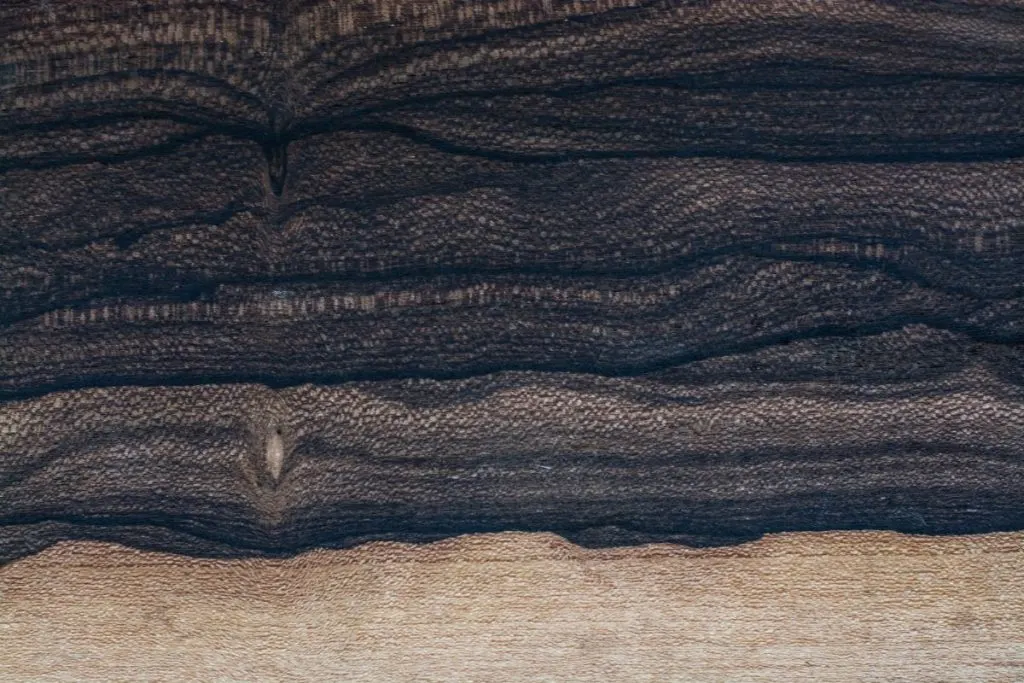
The color ranges from medium to dark brown, sometimes with shades of green or purple, dotted with dark bands of black growth rings.
Girikote has a very unique appearance and is sometimes referred to as a “cobweb” or “landscape” grain statue. The surface of the quarter horn may also show ray flakes similar to the hard maple.
Light yellow sapwood may be incorporated into the design for aesthetic reasons and to reduce waste. The wood grain is straight to slightly meshed. It has a medium to fine texture with a natural luster. Gillicoat is said to be inherently resistant to spoilage.
Overall, Ziricote is fairly dense and fairly easy to operate. Wood tends to crack edges and surfaces during drying, which can be a problem. However, the wood is stable after drying. Also, pieces are usually available on narrow boards or twisted angles, and sapwood is very common.
Ziricote is easy to turn and handle and in most cases can be glued without problems. When allergic susceptibility to certain woods develops, Gillicoat causes a cross-reactivity. Woods that can cause initial sensitivity include pofero, Makassar ebony, cocobolo, and most rosewood.
Holly Wood Fine Texture
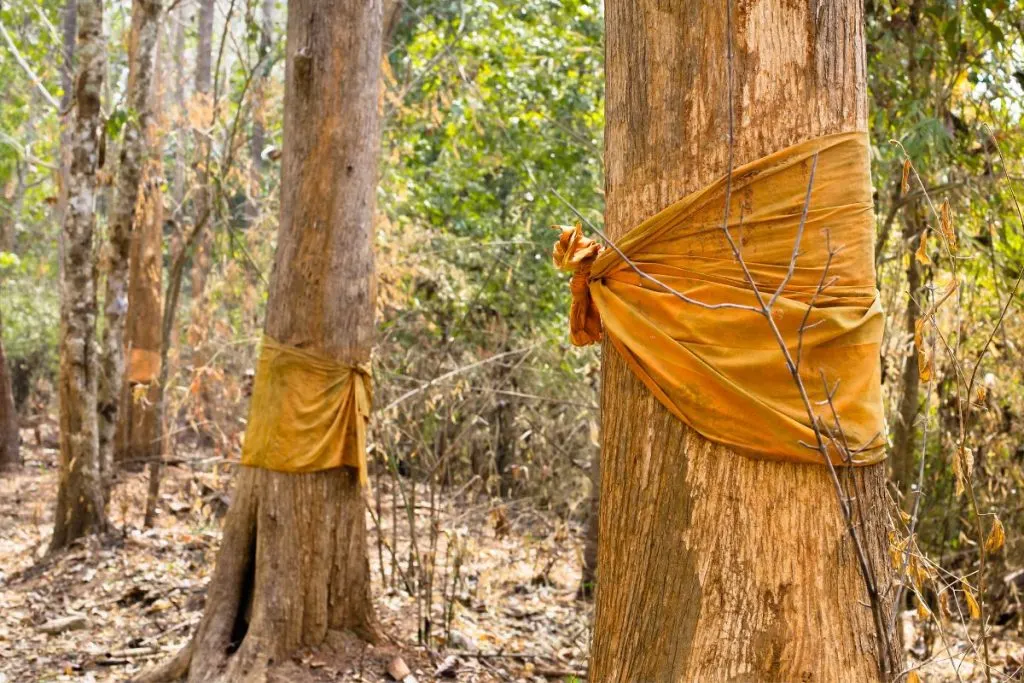
The ideal lumber is very uniform and pale white with few visible grain patterns. Knots are common and can reduce the available area of the tree. If not dried immediately after cutting, bluish/gray fungal spots may develop.
Holly is usually cut in winter and then immediately dried in the kiln to preserve the white color of the wood. The grains are meshed and irregular. It has a medium to fine uniform texture with a moderate natural luster.
It’s often arranged in radial rows, with moderately large to large numbers of small to medium pores. Growth rings can vary due to an intermittent series of early-maturing pores.
They have rays of various sizes, usually at fairly narrow intervals, from narrow to very wide. The substance is usually invisible with a lens.
It is classified as non-perishable and susceptible to insect invasion. Good adhesion, dyeing, and finishing, sometimes dyed black, unlike ebony.
Making Musical Instruments Of A Most Expensive Tree
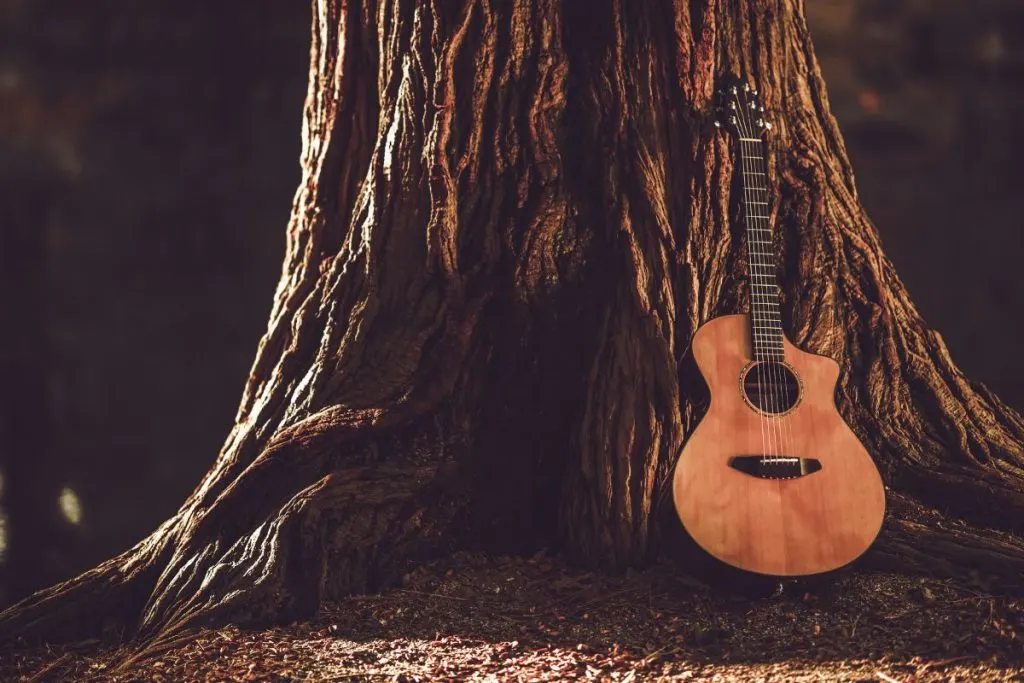
Early European medical instruments along with musical instruments are made from these kinds of wood. I’m sure that is no surprise since their quality is extremely high.
Along with agar wood, Dalbergia nigra, the Hawaiian islands most expensive woods, and Macassar ebony’s most famous cellos, violins, and piano keys in the world are made from these wood materials.
Most expensive types of musical instruments have at least one part of the instrument made from sandalwood. The piano usually has sandalwood piano keys. Violins are traditionally fully made from it, cellos as well, and so on.
Other Things Made From Most Expensive Trees

There are many expensive chess pieces that are made from these woods. Of course, the most expensive chess board, however, isn’t made from wood.
It is a pearl royal chess board, but of course, chess boards made from sandalwood go from 2.000$ to 5.000$ per board.
Wine boxes, knife handles, machine tools, frames, umbrella stands, hangers, doors, plates, pots, and many more are items that are very often made from sandalwood and blackwood.
What Tree Wood Is Actually Worth The Money?
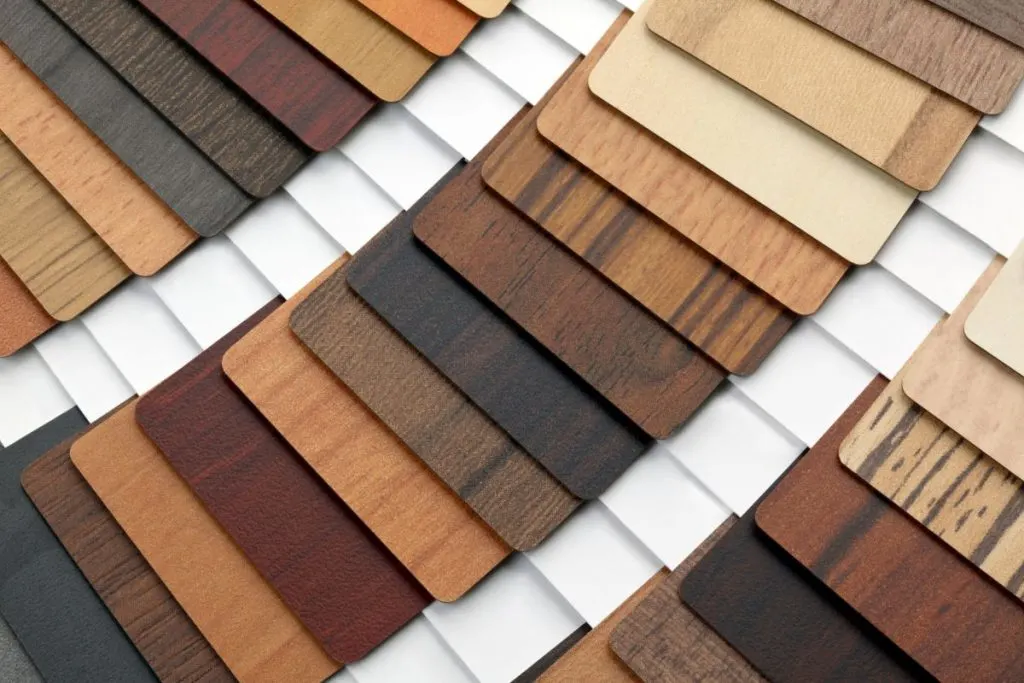
All trees mentioned above will definitely justify their price. Sandalwood price especially. If you want a high-quality item, no matter what, it will be worth it.
Kitchen construction or table construction made from these woods will last for decades and you don’t have to worry about its duration.
Wrapping It Up About The Most Expensive Tree

Do you want unique wood, beautiful wood, scented candles, and special wood in your home? We learned today that from a single wood type can make all this.
These red-brown and whitey trees are just so useful and gorgeous, and I know you can’t resist now buying at least hangers or a pot made from this wood.
The most expensive tree in the world has so much to offer and now you know all about it. I know that I’m about to buy some wonderful sandalwood items for my home and maybe one day, the next generations of my family will enjoy it as well due to their long duration.
That would be all for today my ladies, see you soon!

